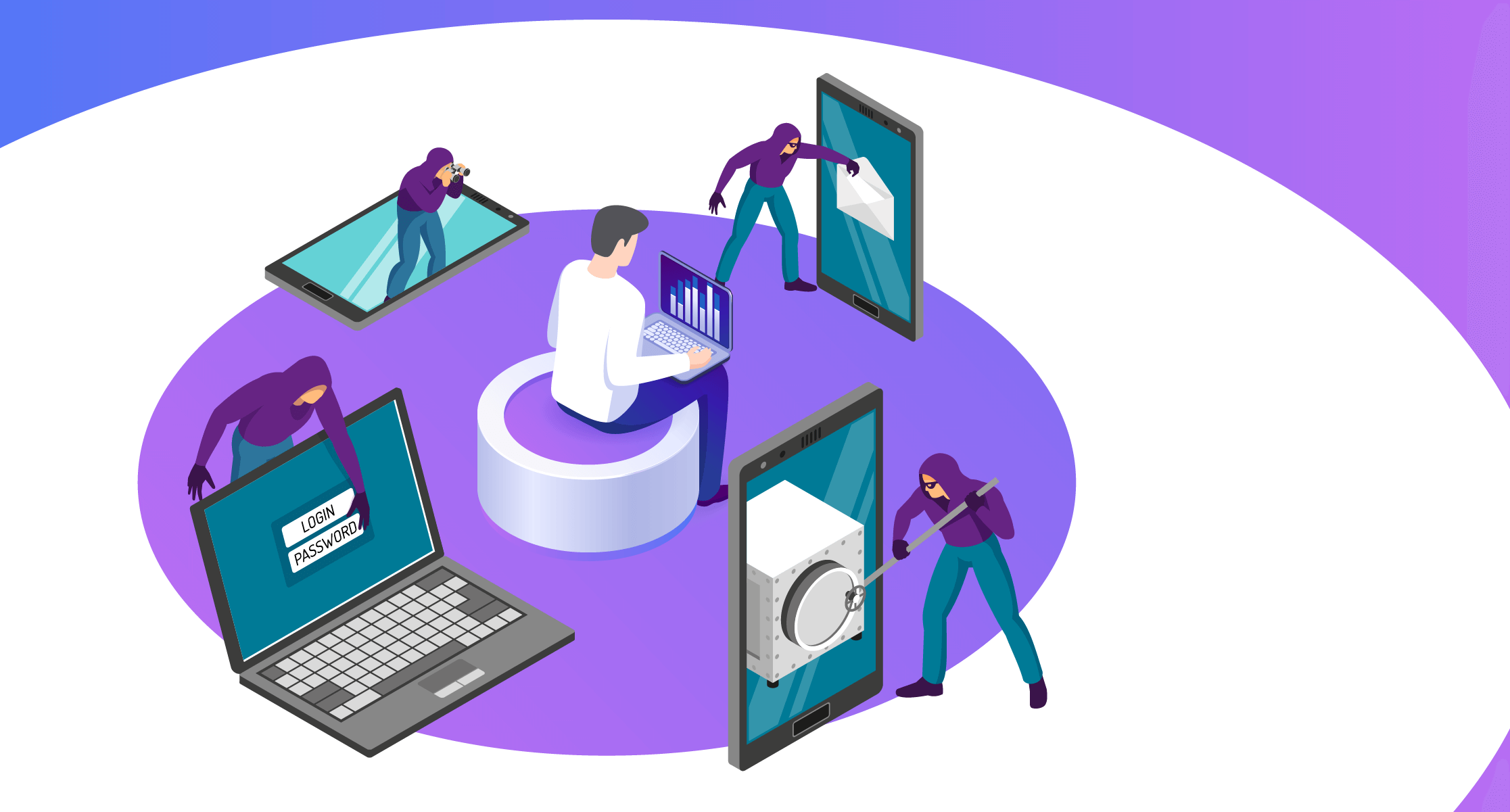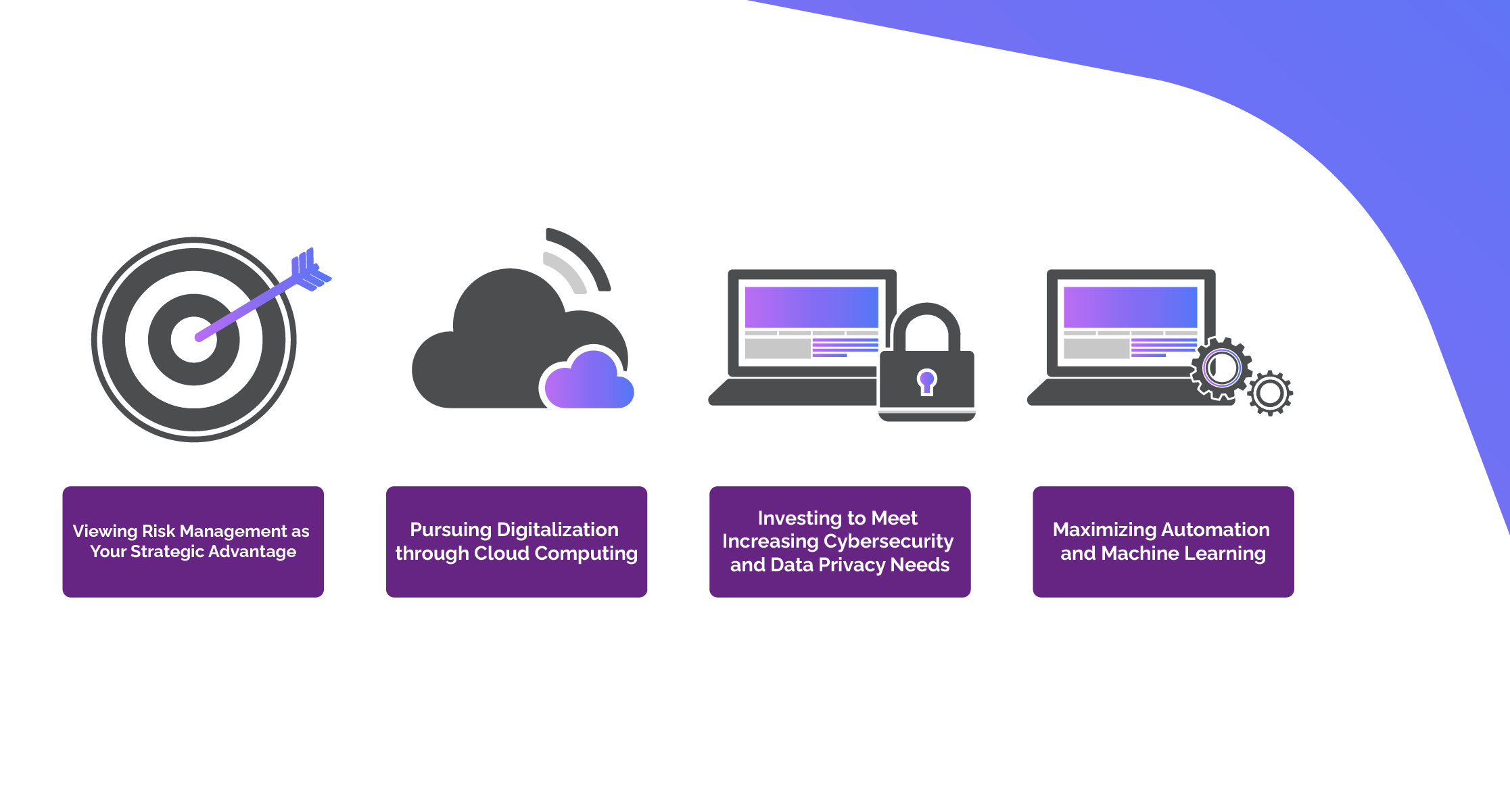BLOG
Enterprise GRC: 4 Emerging GRC Trends for your Post-Pandemic Recovery
Keep up to date with enterprise GRC updates and use them to keep your business secured and protected.
The global pandemic has propelled organizations all over the world to rethink not just the way they work but also the way that they protect their businesses from potentially damaging risks.

Governance, Risk, and Compliance has taken a new face. Organizations needed to pivot to stay competitive. In what felt like a blink of an eye, risk managers found themselves scrambling to stay on top of emerging risks that were not as big of threats as they used to be.
But as with any evolving landscape, the best way to manage this new world of emerging risks is to look forward and get ahead. By keeping abreast with the following global GRC trends — and making wise investments to make the most out of them — organizations will be able to stay fully protected as they thrive during this period of post-pandemic recovery.

View Enterprise GRC as Your Strategic Advantage
As the number of uncertainties in the business landscape increases, the way that top organizations view the role of risk management evolves — and understandably so. More and more, innovation leaders are recognizing enterprise GRC as a superpower that they can use to stay on top of the competition.
From a defensive and reactive view, which focuses primarily on viewing risk management as a means to stave off high-level threats to business productivity and profit, GRC has evolved to take a strategy-driven view that zeroes in on creating an environment that combines company resilience and customer experience.
From a resilience perspective, the new normal warrants enterprise GRC to be viewed as a means to gain trust, credibility, and leadership — all of which are building blocks of a winning business. Think about it: an organization that can stand its ground against disruptions and volatilities will be able to attract more business opportunities, discourage intentional risks, and offer credible guarantees to potential partners. It creates an outward corporate image that elicits trust, not just from potential clients but also from the industry as a whole.
Risk management also plays a pivotal role in creating a customer experience that will promote loyalty among your clientele. In a world where customers have developed to require a certain level of sophistication from their service providers, creating a secured customer experience is of utmost importance. Organizations that can prevent unwanted risks and disruptions from affecting their end-users will ultimately be rewarded.
Pursuing Digitalization through Enterprise GRC and Cloud Computing
The pandemic underscored the importance of being nimble and agile, and the same can be said for the technological tools that organizations deploy in their businesses. The pace of digital change and transformation is going at a whirlwind speed. To remain competitive, businesses should truly invest in tools and systems that will be able to keep pace with this.
Cloud-based tools and technologies offer this capability, and so much more.
Cloud technologies are starting to play a bigger role in the Enterprise GRC ecosystem, owing to the increasing need for remote team collaboration. The hybrid work set-up is here to stay and this is a fact that enterprises need to accept — and be ready for — as they forge forward. On top of that, cloud-based tools also offer real-time experiences that replicate traditional face-to-face and office-based processes. In a workflow that requires quick resolution and ample foresight, the importance of this cannot be understated.
The ability to continuously monitor all pivotal areas of your business — and to ensure that high-risk areas are safeguarded from disruptions and threats — will bolster your team’s capacity to focus on value-adding work for disaster recovery and business continuity.
Investing to Meet Increasing Cybersecurity and Data Privacy Needs as Part of your Enterprise GRC Strategy
The post-pandemic world of work has prompted the need for stringent security investments that corporations have come to incorporate into their security culture. But the thing is, as security ecosystems evolve and become more sophisticated, so do the threats that target them. In a highly digital world, cyberattacks and threats have become more and more complex and thus, more expensive to address.
For this reason, it will serve enterprises a whole lot of good to view cybersecurity as an integral part of their holistic enterprise GRC process and methodology. A proactive enterprise GRC approach should extend the same view to how enterprises manage external threats, especially the ones that will lead to financial and reputational losses. Using an automated tool that continuously monitors enterprise risks — and automates key steps towards resolutions — will protect organizations from risk events that will wreak havoc in the business.
Allocating resources for an enterprise GRC workflow that fortifies internal processes and controls will continue to be a pivotal part of safeguarding risk management positions.
In the same way that corporations need to look outward to stave off harmful enterprise threats, organizations should continue to strengthen their internal data privacy policies and standards. Risk managers and security leaders should continue to monitor national and global compliance standards — and align the corporation’s protocols with them. Needless to say, this should continue to extend to both confidential corporate data and customer information.
Maximizing Automation and Machine Learning
Artificial intelligence and machine learning have become standards in various tech-driven industries, and they have greatly advanced the capabilities of IT GRC infrastructures as well.
You will be hard-pressed to find an organization that hasn’t invested in a powerful AI-driven risk management software — and for good reasons. Machine learning simplifies the complexities that surround GRC and empowers enterprises to process risk information faster than any manual process ever would.
The use of these powerful systems will continue to take the ground as businesses recognize the importance of visibility and agility in a post-pandemic environment. Evolving threats will be ever-present and enterprises will no longer hesitate to meet them head-on.
Investing in enterprise GRC tools that leverage AI and machine learning, while offering automation capabilities that further reduce the error-prone manual tasks, will soon become a standard.
Understanding the ever-evolving world of GRC is only one part of an enterprise’s journey towards digital maturity. The other half — albeit the more challenging one — involves making the necessary changes and investments that will empower the organization to use trends to its advantage.
Unikomm, the first ServiceNow partner in GCC, is one of the top ServiceNow consultants in Saudi Arabia. We are proud to partner with forward-looking organizations in KSA and guide them throughout their whole journey. Let’s work together in designing a GRC ecosystem that will bolster your security and growth through post-pandemic recovery and beyond.
For more information on why – and how – you can digitalize the other areas of your enterprise, read more here.
LATEST RESOURCES
AI Virtual Agents: The Quickest and Easiest Way to Address Service Concerns
Automated Service Mapping: Your Powerful Secret to a Service-Aware Infrastructure
Why Top KSA Enterprises are Investing in the Best CSM Software (And Why You Should Too)
Employee Self-Service | 5 Tips to Help your Team Embrace It
Enterprise GRC: 4 Emerging GRC Trends for your Post-Pandemic Recovery
Transform your Digital Aspirations Today.
Get on a call with your dedicated Unikomm consultant
Take ahold of content made for IT practitioners who refuse to be left out.